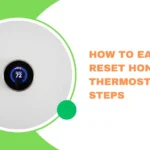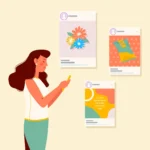
Thermostat Wiring Diagram in Simple 7 Steps for Best Guide

When maintaining or upgrading your HVAC system, understanding your Thermostat Wiring Diagram in Simple 7 Steps for Best Guide. This diagram provides a detailed map of how your thermostat connects to your heating and cooling system, ensuring you can troubleshoot, repair, or install a new thermostat with confidence. Here’s a comprehensive guide to help you decode and work with your thermostat wiring diagram.
Thermostat Wiring Diagram in Simple 7 Steps for Best Guide
1.Basics of Thermostat Wiring
A thermostat wiring diagram is a schematic representation of the connections between your thermostat and HVAC system components. These diagrams usually include labels for each wire and its corresponding terminal, allowing you to understand how each wire interacts with different parts of your system.
2.Key components of a thermostat wiring diagram
- Thermostat Terminals: Each terminal on the thermostat is labeled with a letter indicating its function. Common terminals include:
- R (Red): Power supply for thermostat.
- W (white): heating signal, usually connected to the furnace.
- Y (yellow): cooling signal, connected to air conditioning.
- G (green): Fan control, which turns the fan on and off.
- C (Common): Provides a continuous return path for the power supply, often used in modern thermostats.
- HVAC System Components: The diagram will also indicate connections to the heating system (furnace, boiler), cooling system (air conditioner) and fan. Understanding these connections helps ensure proper system operation.
- Wire Color: Standard wire colors are often used in HVAC systems, although actual colors may vary. Always check with the diagram and your system’s manual.
3.How to read a thermostat wiring diagram
- Identify Terminals: Identify and understand each terminal on the thermostat. Refer to the diagram to match each terminal to its corresponding wire.
- Follow the wire path: Trace the wires from the thermostat to the HVAC components The diagram will show how each wire connects to specific terminals on both the thermostat and the HVAC system.
- Check for compatibility: Make sure your new thermostat is compatible with your existing wiring and HVAC system. Most modern thermostats are designed to work with different systems, but checking compatibility can prevent problems.
4.Typical wiring configuration
- Single-stage system: usually has one heating and one cooling stage. Wiring is straightforward, with connections for heating (W), cooling (Y) and fan (G).
- Multi-Stage System: Involves multiple stages of heating or cooling. The wiring diagram will include additional terminals such as W1, W2 (for second-stage heating), and Y1, Y2 (for second-stage cooling).
- Heat pumps: These systems often use additional terminals such as reverse valve control and e for emergency heat. Make sure your wiring diagram accounts for this specific requirement.
5.Troubleshooting common wiring problems
- No power to thermostat: Check the R terminal and make sure it is connected properly. Verify that the HVAC system is operational.
- Heating or cooling not working: Make sure the W and Y wires are connected correctly and the corresponding HVAC components are working
- Fan problem: If the fan does not turn on, check the G wire connection and make sure the fan settings are configured correctly on the thermostat.
6.Installing a new thermostat
- Turn off the power: Before starting any wiring work, turn off the power to your HVAC system at the circuit breaker to avoid electric shock.
- Remove the old thermostat: Carefully detach the old thermostat from the wall, noting the wire connections for reference.
- Connect the new thermostat: Connect the wires to the corresponding terminals on the new thermostat, closely following the wiring diagram.
- Mount and Power Up: Secure the thermostat to the wall and restore power to the HVAC system. Test the new thermostat to make sure it is working properly.

7.Consult professional help
If you are unsure about interpreting wiring diagrams or making connections, it is always wise to consult a professional HVAC technician. They can provide expert guidance and ensure that your thermostat is wired correctly and safely.
Conclusion
Understanding your thermostat wiring diagram is essential to maintaining, troubleshooting, or upgrading your HVAC system. By familiarizing yourself with common terminals, wiring configurations, and troubleshooting tips, you can effectively manage your thermostat connections and ensure optimal performance of your heating and cooling system. When in doubt, don’t hesitate to seek professional help to ensure a smooth and safe installation or repair process.









